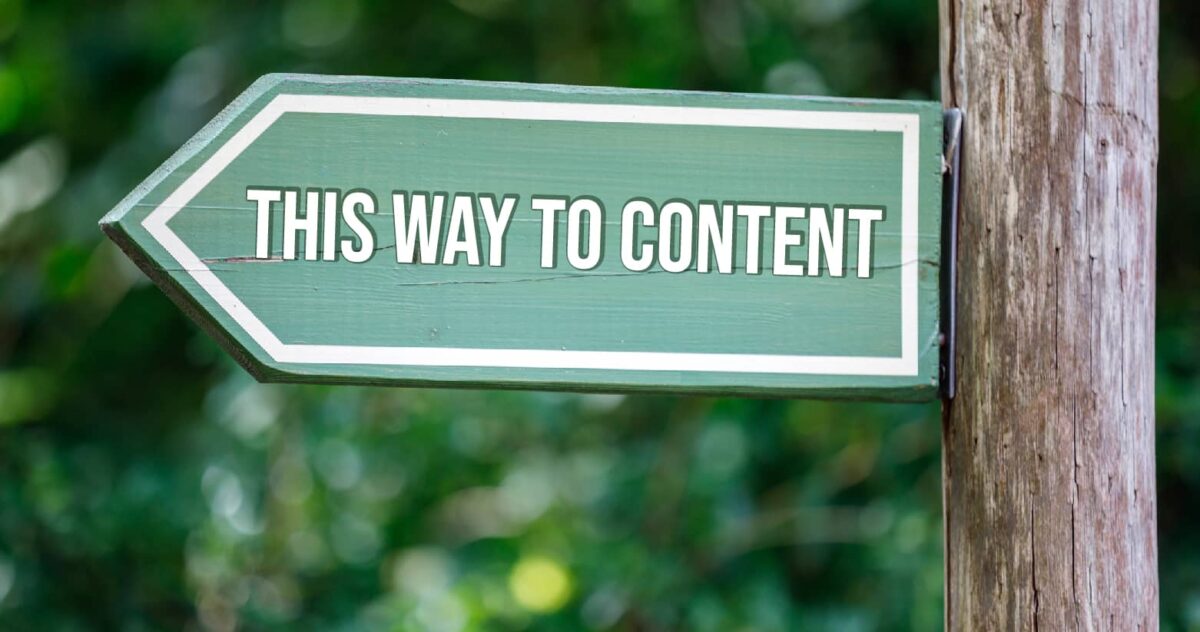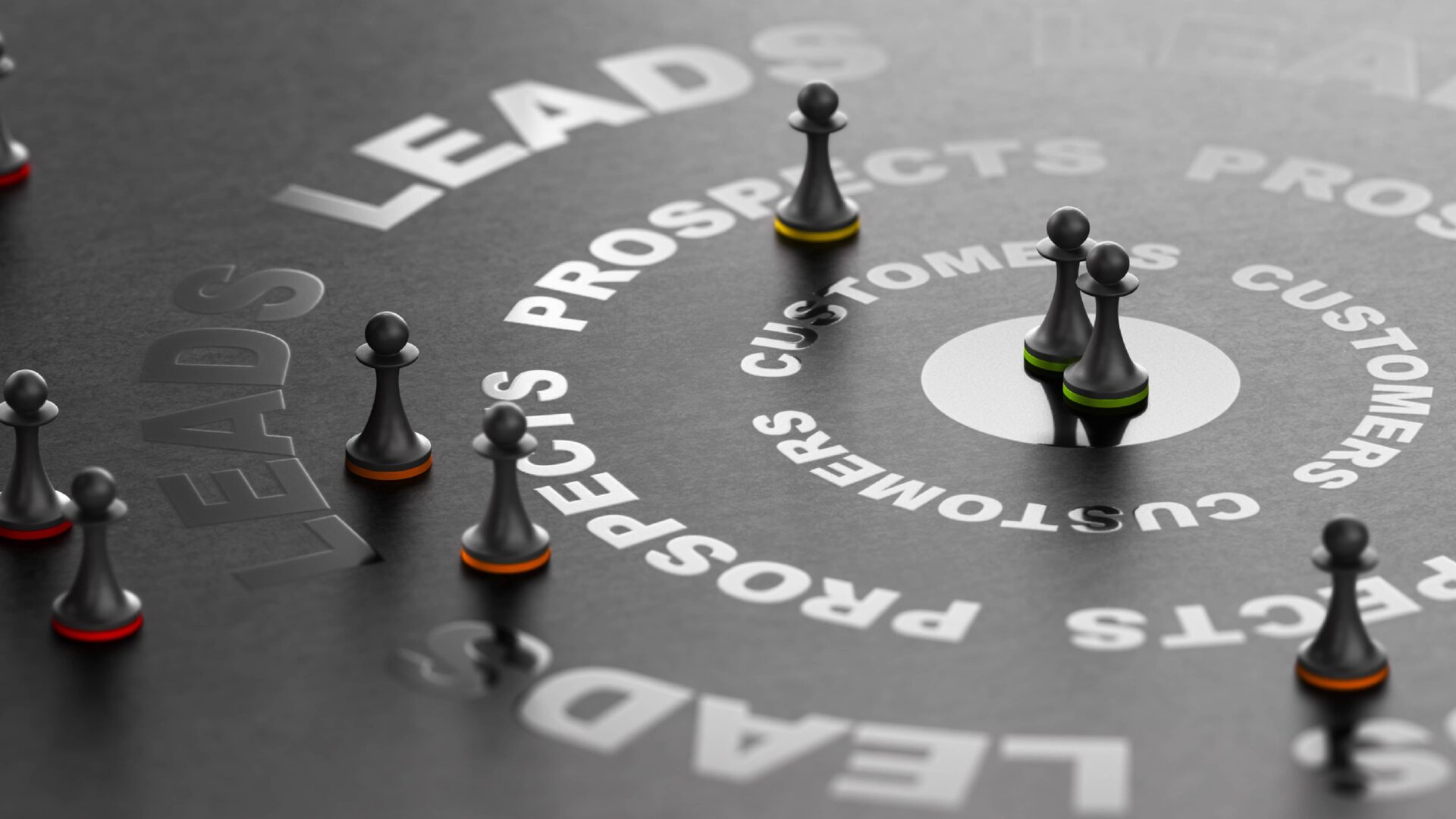Every consumer has problems that a brand or content creator can solve. Most of them are proactively looking for valuable, relevant information via social media feeds, search engines, newsletters and other sources. That said, consumers rarely—if ever—set out on their journey hoping to encounter marketing messages along the way.
Individuals of all ages have become adept at tuning out overt advertisements. This shift, in particular, has paved the way for the rise of content marketing. This guide explores the current content marketing landscape including its benefits, audience targeting and content strategies for different stages of the customer journey.
What is Content Marketing?

Content marketing is a strategic marketing approach to create and distribute valuable content for a marketing purpose. That marketing purpose could be to attract a clearly defined audience, to educate audience cohorts, to drive engagement on social channels or even to build brand affinity through entertaining content.
Whatever the purpose, content marketing is about helping your audience solve problems in an organic way. Unlike traditional advertising, content marketing builds trust, credibility and authority by offering information that addresses the target audience’s current interests first rather than focusing on your organization’s sales/promotional message.
The primary purpose of content marketing goes beyond immediate sales conversions. It’s about fostering brand awareness, educating the audience and establishing a strong online presence. Content marketing serves as a bridge between businesses and their target audience, providing valuable information that helps consumers make informed decisions.
When creators and businesses offer consistent value, they position themselves as industry leaders and trusted advisors, resulting in increased customer loyalty and advocacy—not just audience exposure to their messages.
What Are the Benefits and ROI of Content Marketing?

Content marketing fuels continuous growth and long-term impact via several key advantages:
- Increased Brand Visibility: U.S. consumers spend an average of about eight hours per day consuming content. Investing in what your audience cares about coupled with regular, consistent content creation and activation boosts your brand’s awareness across all online channels.
- Enhanced Audience Engagement: In 2022, 63% of marketers attributed increased brand loyalty to content marketing. Valuable content encourages audience interaction, yielding higher engagement rates and customer retention.
- Amplification of Credibility: Providing insightful content positions your brand as an industry expert. Insightful thought leadership content helps both customers and competitors view the content creator as an authority in their field.
- Audience Empowerment: 290M people use adblocking technology monthly, but audiences are genuinely glad to consume value-add content since it empowers them to solve their own problems and make smarter purchasing decisions.
- Improved SEO: High-quality content contributes to better search engine rankings and drives organic traffic. In fact, 62% of B2B marketers ranked ‘Changes to SEO/Search Algorithms’ as the most important content marketing trend in 2022.
- Lead Generation: 60% of typical consumers feel inspired to go looking for a product or service after viewing content about it. Valuable content attracts potential customers and nurtures them through the sales funnel.
- Cost-Effectiveness: Content marketing reaches larger audiences for fewer dollars. In addition to generating more leads than traditional advertising, content marketing does it at a lower cost per engaged lead.
Calculating the exact return on investment (ROI) of content marketing can be challenging due to the long-term role content plays in the customer journey. However, tracking metrics such as website traffic, engagement rates, lead generation and customer retention provide valuable insights into its effectiveness.
What Audiences Engage With Content?

Effective content marketing centers on your audience’s needs, wants and desires. Content marketing has proven valuable for three main audience categories:
- Businesses (B2B): B2B content marketing targets other businesses by offering industry insights, data-driven reports and problem-solving content. This audience segment is looking for solutions to professional problems. Professional audiences routinely engage with white papers, case studies, webinars and LinkedIn articles as they look for solutions in their work.
- Consumers (B2C): Creating consumer-oriented content involves addressing individual pain points, providing solutions and building emotional connections to the consumer. Blogs, social media posts, infographics, videos and podcasts are effective formats for reaching most consumers.
- Employees (B2E): Internal content marketing focuses on engaging and informing your organization’s employees. This includes company newsletters, internal blogs and training materials. Authentic employee storytelling is particularly powerful across all channels and media formats.
Smart Brands Use Content as a Guide on the Customer Journey

Just as certain content formats are better suited for certain audience segments, different types of content will better serve customers at different points of their journey.
The customer journey is a nonlinear process spanning stages of awareness, consideration and decision-making. Crafting content that resonates with each stage enhances the chances of conversion. Here’s a breakdown of content formats and channels for different stages:
- Awareness Stage: In this stage, focus on creating informative and engaging content that addresses common pain points and questions your audience might have.
- Blogs, Testimonials/Success Stories and Social Content: Ideal for awareness and consideration stages, these formats provide easily digestible information and insights.
- Videos and Podcasts: Engaging formats suitable for all stages, video and audio content captures attention and conveys information audiences can consume casually.
- Consideration Stage: Provide in-depth content that showcases your expertise and offers solutions.
- Infographics and Interactive Content: Almost 50% of consumers prefer interactive content, making it ideal for simplifying complex information in the awareness and consideration stages.
- White papers and Webinars: Perfect for the consideration stage, white papers and webinars offer in-depth knowledge and solutions. Almost 60% of content marketers report that virtual events and webinars produced the best results.
- Decision Stage: Offer content that highlights the unique value of your products or services.
- Testimonials, Reviews, Product Demos and Comparison Guides: Today, more than 99% of consumers read reviews before making a purchase decision. Additionally most customers value testimonials as much as personal recommendations from their friends.
- Retention/Advocacy Stage: Maintain customer engagement through content that nurtures loyalty.
- Email Campaigns: 80% of consumers are more likely to purchase from brands that engage in personalized advertising. Email campaigns, for instance, are not only effective for offering that personalized content to your audience members but also for nurturing leads and retaining customers.
Make Content Work for You

Starting or maintaining a content marketing program can seem like a daunting task for any company. Here are a few guide posts to make it more manageable.
- Engage the Right Talent: While content marketing can be learned, audience expectations and content consumption change all the time. It’s easy to downplay the work involved to create a blog or podcast, but it takes real expertise to keep a program going and to drive the right results.
- Connect content to real goals: Creating content can feel like a goal in itself, but impactful content marketing programs are always tied to business objectives. Whether it’s attracting new audiences or increasing conversions with existing ones, the goal should always inform the content strategy.
- Establish a Sustainable Timeline: Content marketing can seem overwhelming because of the sheer amount of content formats, audiences or stylistic choices you must consider. Be sure to create short- and long-term plans that clearly outline what deliverables you are expecting to produce, what budget you are operating under and the resources that you already have available.
- Own Your Content Niche: The key to any successful content strategy is knowing your audience. This isn’t about marketing to the general public. It’s about adding value from your own sphere of insight and expertise. Successful content programs typically serve a specific, segmented audience with a tangible need.
Content Marketing is an Effective, Efficient Road to Customer Engagement

Content marketing equips brands to connect with their audiences on a deeper level. By creating helpful, relevant and consistent content, businesses can foster trust, establish authority and drive sustainable growth. Tailoring content to different stages of the customer journey and choosing the right formats and channels can maximize engagement and conversions.
As the digital landscape continues to evolve, embracing content marketing is not just an option; it’s a necessity for any modern marketing strategy.



